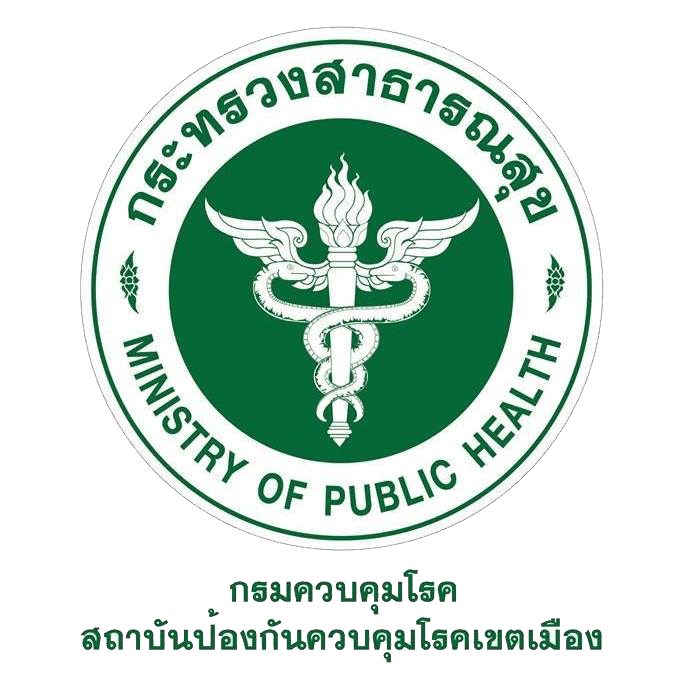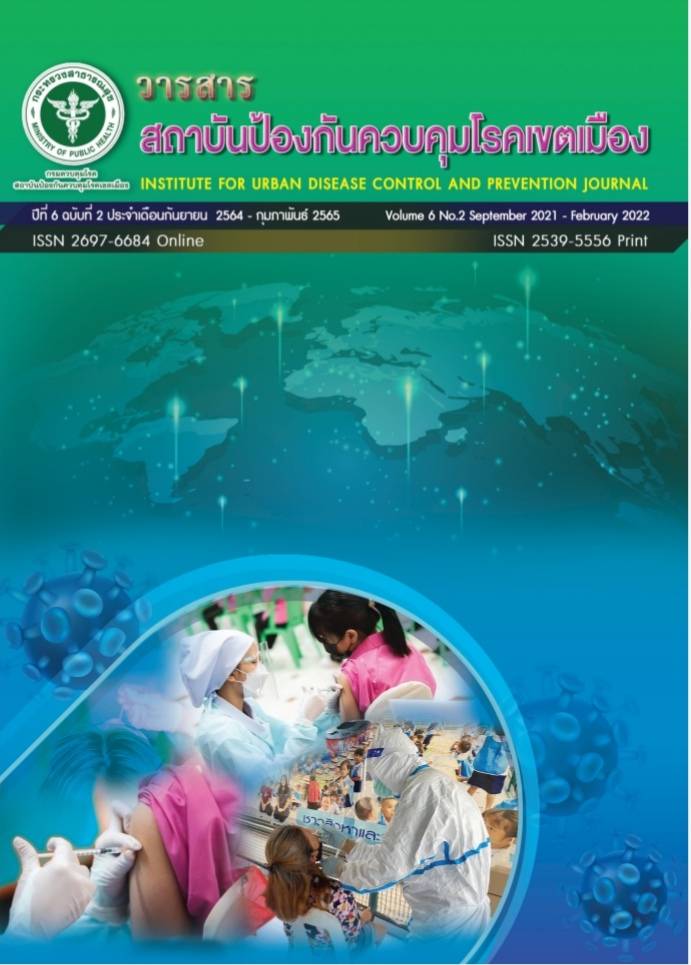รายงานผู้ป่วยที่ตรวจพบ SARS-CoV-2 RNA ซํ้าหลังการติดเชื้อไวรัสโคโรนา 2019: ความท้าทายในการแยกแยะจากการกำเริบหรือการติดเชื้อซํ้า รายงานผู้ป่วยที่ตรวจพบ SARS-CoV-2 RNA ซ้ำหลังการติดเชื้อไวรัสโคโรนา 2019
Main Article Content
บทคัดย่อ
วัตถุประสงค์
รายงานผู้ป่วยนี้เป็นกรณีศึกษาของผู้ป่วยที่ตรวจพบ SARS-CoV-2 RNA ซํ้าหลังติดเชื้อโควิด-19
และคำแนะนำสำหรับแพทย์และนักระบาดวิทยาในการดูแลผู้ติดเชื้อรายงานผู้ป่วยผู้ป่วยหญิงอายุ 50 ปี ไม่มีโรคประจำตัว ตรวจพบว่าติดเชื้อโควิด-19 จากผล RT-PCR โดยมีอาการเล็กน้อย ได้แก่ ไข้ตํ่าๆ ปวดกล้ามเนื้อและจมูกไม่ได้กลิ่น ผู้ป่วยได้รับการตรวจ RT-PCR ซํ้าเป็นลบ (หลังจากพบการติดเชื้อครั้งแรก 29 วัน) และตรวจพบแอนติบอดี IgG ต่อ SARS-CoV-2 อย่างไรก็ตาม ในวันที่ 42 หลังจากพบการติดเชื้อครั้งแรก ผู้ป่วยตรวจพบผล RT-PCR บวกซํ้าโดยไม่มีอาการใดๆ ผลการตรวจ RT-PCR ซํ้าอีกครั้งวันที่ 44 ให้ผลเป็นลบ
อภิปรายผล
การพบ SARS-CoV-2 RNA ซํ้าในกรณีนี้น่าจะเกิดจากการขับไวรัสในทางเดินหายใจที่นานกว่าปกติ (prolonged viral shedding) เนื่องจากตรวจพบแอนติบอดีต่อเชื้อ SARS-CoV-2 แล้ว รวมทั้งตรวจไม่พบยีน subgenomic E จากการตรวจวิเคราะห์เพิ่มเติม อย่างไรก็ตามแพทย์ควรพิจารณาจากประวัติและอาการของผู้ป่วย รวมถึงหลักฐานทางระบาดวิทยาและการตรวจทางภูมิคุ้มกันเพื่อหาสาเหตุของการพบ RNA ซํ้า หากไม่พบหลักฐานของการแบ่งตัวของไวรัส (active replication) ผู้ป่วยสามารถกลับมาทำกิจกรรมตามปกติได้
Article Details

อนุญาตภายใต้เงื่อนไข Creative Commons Attribution-NonCommercial-NoDerivatives 4.0 International License.
บทความที่พิมพ์ในวารสารสถาบันป้องกันควบคุมโรคเขตเมือง ถือว่าเป็นผลงานวิชาการ งานวิจัยและวิเคราะห์ ตลอดจนเป็นความเห็นส่วนตัวของผู้เขียนเอง ไม่ใช่ความเห็นของสถาบันป้องกันควบคุมโรคเขตเมือง หรือคณะบรรณาธิการแต่ประการใด ผู้เขียนจำต้องรับผิดชอบต่อบทความของตน
เอกสารอ้างอิง
Cevik M, Tate M, Lloyd O, Maraolo AE, Schafers J, Ho A. SARS-CoV-2, SARS-CoV, and MERS-CoV viral load dynamics, duration of viral shedding, and infectiousness: a systematic review and meta-analysis. Lancet Microbe. 2021 Jan;2(1):e13-e22.
Abbott. Abbott ARCHITECT SARS-CoV-2 IgG II Quant Reagent Instructions for Use. December 2020.
Woloshin S, Patel N, Kesselheim AS. False Negative Tests for SARS-CoV-2 Infection - Challenges and Implications. N Engl J Med. 2020 Aug 6;383(6):e38.
Kang H, Wang Y, Tong Z, Liu X. Retest positive for SARS-CoV-2 RNA of "recovered" patients with COVID-19: Persistence, sampling issues, or re-infection? J Med Virol. 2020 Nov;92(11):2263-2265.
Gousseff M, Penot P, Gallay L, et al. Clinical recurrences of COVID-19 symptoms after recovery: Viral relapse, reinfection or inflammatory rebound?. J Infect. 2020;81(5):816-846.
Lago LP, Lozano HM, Díaz JAP, et al. Proper assignation of reactivation in a COVID-19 recurrence initially interpreted as a reinfection. J Infect. 2021; jiab302.
Lancman, G., Mascarenhas, J. & Bar-Natan, M. Severe COVID-19 virus reactivation following treatment for B cell acute lymphoblastic leukemia. J Hematol Oncol. 2020;13:131.
Centers for Disease Control and Prevention. Biosafety for specimen handling [Internet]. 2021 [cited 2021 July 29]. Available from: https://www.cdc.gov/coronavirus/2019-ncov/lab/lab-biosafety-guidelines.html
Verma R, Kim E, Renu Verma, Martínez-Colón GJ, et al. SARS-CoV-2 Subgenomic RNA Kinetics in Longitudinal Clinical Samples. Open Forum Infect Dis. 2020;8(7):ofab310.
Perera R, Tso E, Tsang O, et al. SARS-CoV-2 Virus Culture and Subgenomic RNA for Respiratory Specimens from Patients with Mild Coronavirus Disease. Emerg Infect Dis. 2020;26(11):2701-2704.
Marot S, Calvez V, Louet M, Marcelin AG, Burrel S. Interpretation of SARS-CoV-2 replication according to RT-PCR crossing threshold value. Clin Microbiol Infect. 2021 Jul;27(7):1056-1057.
Cheng HY, Jian SW, Liu DP, et al. Contact Tracing Assessment of COVID-19 Transmission Dynamics in Taiwan and Risk at Different Exposure Periods Before and After Symptom Onset. JAMA Intern Med. 2020 May 1; 180(9):1156-1163.


